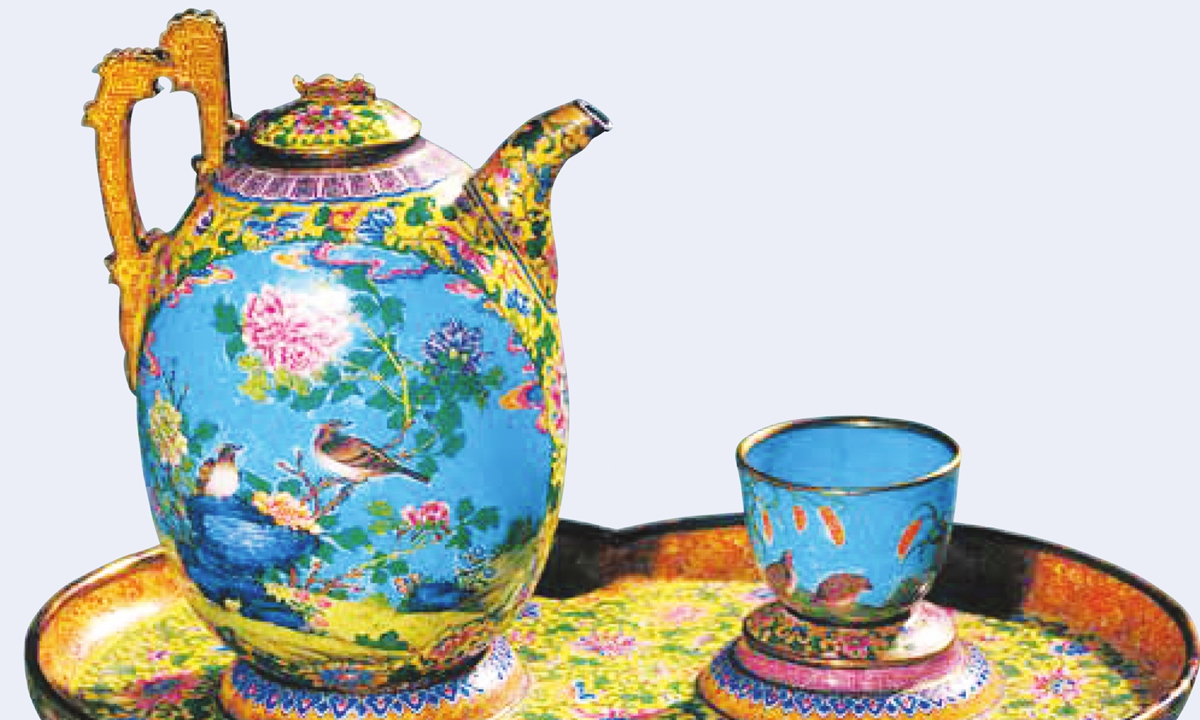Cloisonne
The Chinese for cloisonne is jing tai lan, "Jing Tai" being the name of a Ming Dynasty emperor during whose reign mass production of such articles began and lan, meaning "blue" - in most cases the background color of jing tai lan. Cloisonne enamel techniques were brought from Persia into China's Yunnan Province during the Yuan Dynasty (1279-1368). These were improved during the Ming Dynasty (1368-1644) by incorporating them with some of the traditional techniques for metal inlaying and porcelain making, which eventually gave birth to a new kind of cloisonne called jing tai lan. To produce a jing tai lan or Chinese cloisonne vase, for example, the workman needs to produce a copper roughcast, welds some decorative patterns of copper wires to the roughcast, inlays the empty space with enamel and, last of all, fires the "decorated" roughcast in a kiln. If all go well, the finished product will be elegant with a crystal or deep blue background and dazzling with red, green, yellow and white enamel that throws the golden yellow decorative patterns in sharp relief. Jing tai lan articles could be large - for example, a Tibetan-style pagoda in the Palace Museum collection is 2.3 meters tall. There are also small things like jewel cases and toothpick holders. Jing tai lan articles have been popular all the time, and are still in mass production. Generally speaking, those produced during the Ming Dynasty have relatively heavy roughcasts, and are relatively simple in design. Those produced during the early Qing Dynasty (1644-1911) period, seem to be a bit too polished due to an over stress on their elegance. In comparison, those of the late Qing period are crude in workmanship and superfluous in style.
About the book
Chinese Cultural Relics Written by Li Li Published by China Intercontinental Press

Cloisonne enamel tea set Photo: Courtesy of the China Intercontinental Press

